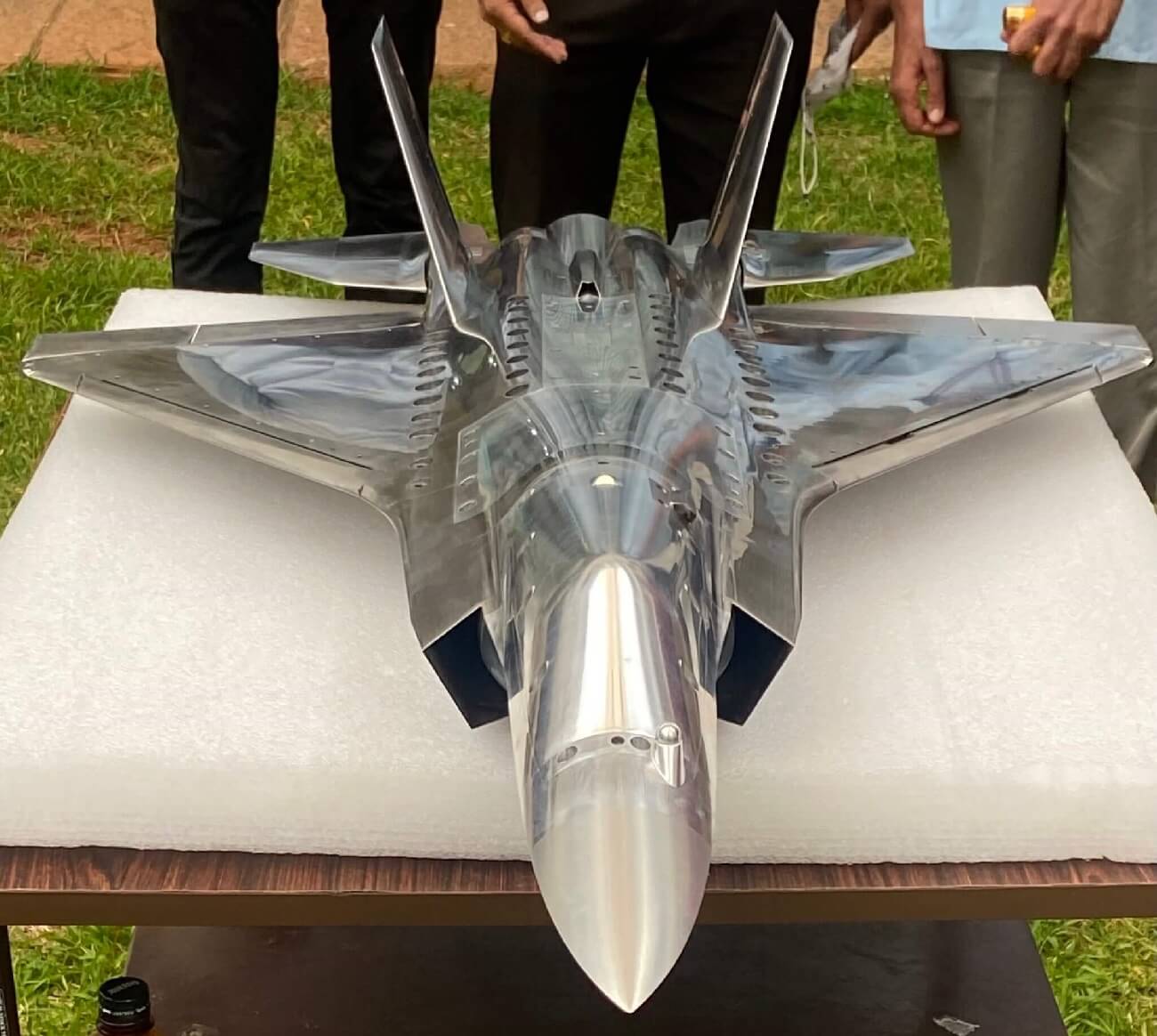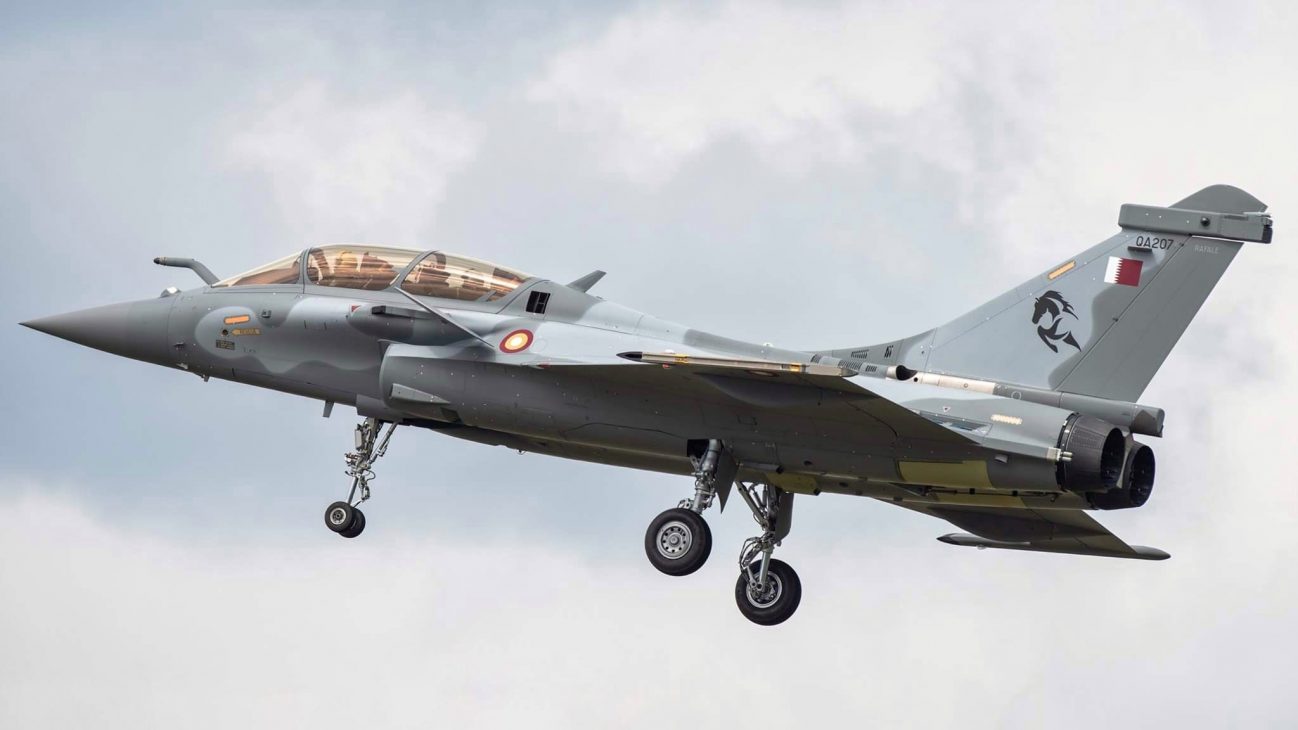Images of a miniature scale model of India’s under development Advanced Medium Combat Aircraft (AMCA) on social media have sparked speculation about the features and configuration of India’s fifth-gen fighter aircraft.
Called the Integrated Wind Tunnel Model (IWTM), the results of the wind tunnel test could possibly inform the prototype of the AMCA Mark.1 (Mk1), after which the plane is expected to go into serial production.
The Mk1 itself will influence the Mk2, expected to be a full stealth aircraft, with the Mk2 having Low Observability (LO) features.
Indian AMCA is envisioned as a twin-engine stealth aircraft with an internal weapons bay and diverter-less supersonic intake, which has been produced for the first time and for which the design is now complete.
It will be a 25-tonne aircraft with an internal payload of 1,500 kg and an exterior payload of 5,500 kg in addition to 6,500 kg of internal fuel.
Being developed by the Aeronautical Development Agency (ADA), a laboratory of the Defence Research and Development Organization (DRDO), the first prototype is scheduled to roll out by 2023-24, with deliveries to begin by 2030.

The Indian Air Force is said to have committed to 40 AMCA Mk1 fighters and at least 100 Mk.2 variants, which is expected to begin reaching IAF units by 2035.
What Does The Wind Tunnel Model Reveal?
The prime features are the Diverterless Supersonic Inlet (DSI) and a 3D ‘bump’ that prevent radar waves from bouncing off the engine blades/turbines, becoming a major stealth feature.
It then sports in what appears to be an Infrared Search and Track (IRST) above the nose cone on the left outside the cockpit canopy. Cued with an Active Electronically Scanned Array (AESA) radar, it is used to enhance medium and long-range detection of targets.
However, the model shows it to be mounted on a cylindrical stand, which is odd, considering that such protrusions compromise stealth as it gives a greater surface for radar waves to bounce off from and return to their source.
Thus, its frontal Radar Cross Section (RCS) would be higher, meaning when scanned from the front, the likelihood of it being detected is greater.

The IRST seen on India’s MiG-29s, Dassault Rafale, and Su-30 fighters is inserted into a socket-like section. The AMCA scale model displayed at last AeroIndia did not show the IRST.
Then the top left-hand side of the front fuselage behind the cockpit is what seems like an internal cannon, mostly a 23 mm gun for close engagements, which again juts out quite prominently.
Cannons for dogfights are internal, embedded into the body, and covered by an automatically opening hatch. On stealth jets like the F-35 Lightning II, the cannon is concealed just on top of the left engine with a retractable door.
On the top fuselage in the middle of the spine is another protrusion whose design is unclear but could be one of either two things – A Missile Approach Warning System (MAWS) or a concealed mid-air refueling inlet.
In case it is the former, it could be part of a larger Distributed Aperture System (DAS) like on the F-35, which synthesizes data from various sensors spread around the aircraft, allowing the pilot a better 360-degree situational awareness.
Other rounded sections seen outside the cockpit could be Front Sector Optronics like on the Dassault Rafale or the F-35, which would also form a part of its DAS.
The absence of a chin-mounted Electro-Optical Targeting System (EOTS) like the F-35 or the J-20 means the AMCA will have to use an external targeting pod that compromises stealth and takes up space that could carry other ordnance. An EOTS can also double up as an IRST, making it more versatile.
And on the top fuselage towards the nozzles and between the two vertical stabilizers (tail) is an Auxiliary Power Unit (APU) air intake system. It is a pre-cooler and heat exchanger that cools the electronics on board. The tails themselves seem to be fixed and not all moving from the root, like on the J-20 or the Su-57.
Not Fully Stealth?
These observations are merely speculatory as there has been no official confirmation on the design features and may very well exist only on the prototype but altered in the final production variants.
There had been talks about the Mk.1 possibly not being a full stealth aircraft anyway, with only some very Low Observability (LO) characteristics.
But the Mk.1 would still fall in the Gen 4.5++ category, which is still a major air warfare platform. Being able to command wingmen drones and possessing advanced radars, avionics, and electronic warfare (EW) can still allow the aircraft to undertake highly complex, frontline missions.
And that it will be followed by the Mk.2 means even these design flaws would be corrected.
- The author can be reached at satamp@gmail.com
- Follow EurAsian Times on Google News




